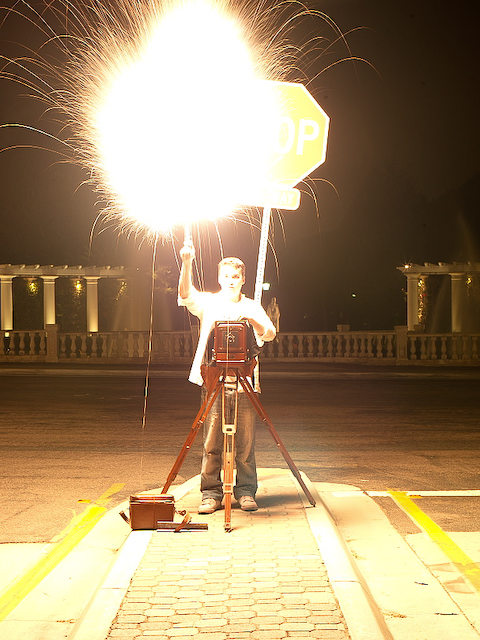Alfred Eisenstaedt using a bare light bulb to fill shadows in the 1940's
 Brassai worked hard at the technical aspects of his photography and be
Brassai worked hard at the technical aspects of his photography and believed it was important in his efforts to show his subjects clearly. The flash bulb had just been made commerically available in 1931 and it was perfect solution for shooting in crowded clubs. .
This is an early flashbulb holder with an irremovable reflector with a Sashalite flash bulb
. The bulb contained aluminum foil in 2 atmospheres of pure oxygen that was ignited with 2 D cell batteries. Even though it was a hugh bulb it didn't put out nearly as much light as flash powder.




Before the release of the flashbulb, he was using flash powder outdoors at night to create supplemental light. Flash powder was essentially a control explosion of Magnesium and created noise, soot and light. I am sure soot and noise would not be welcome in the kind of clubs he was photographing in.





























































